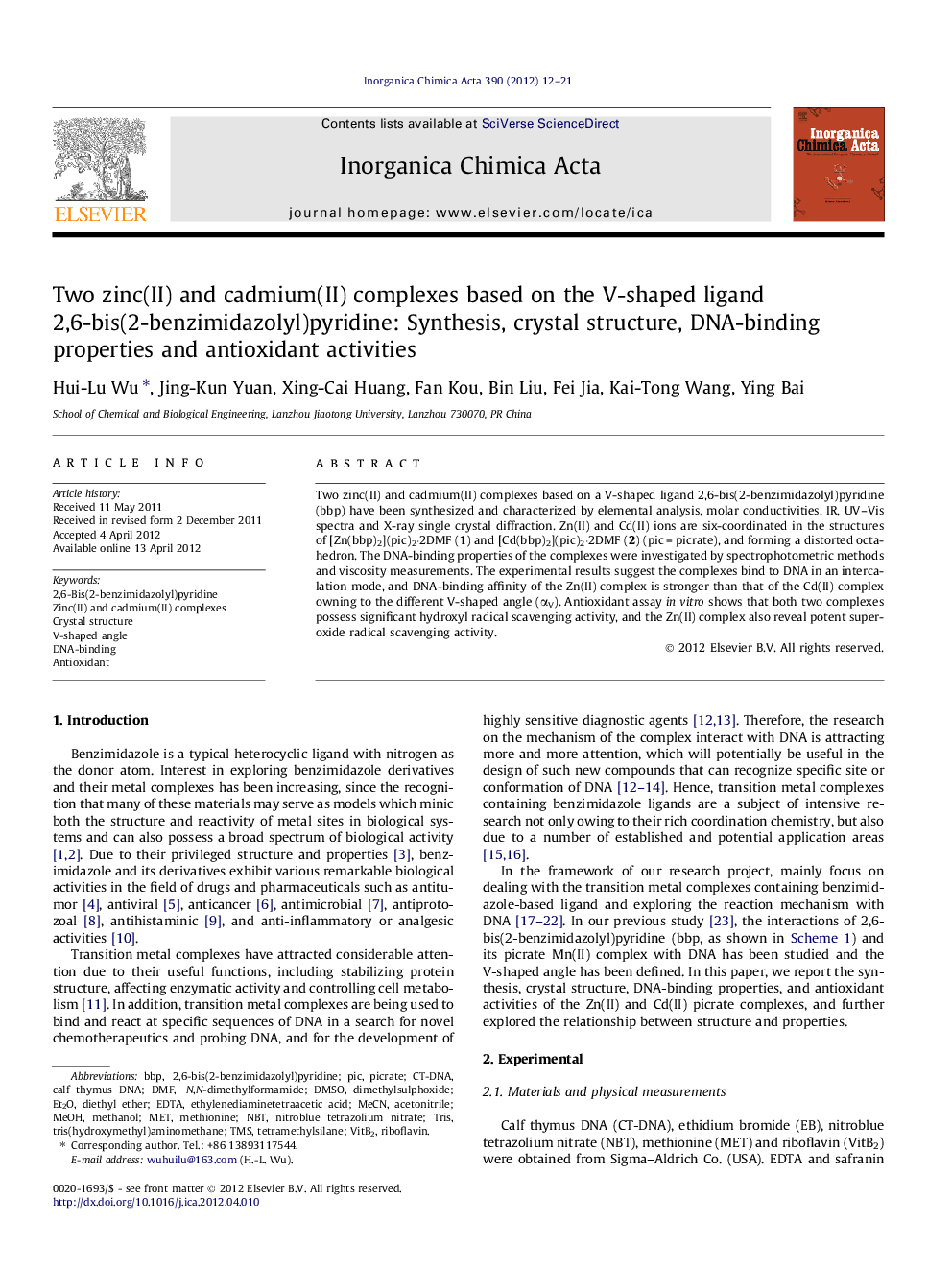| Article ID | Journal | Published Year | Pages | File Type |
|---|---|---|---|---|
| 1312429 | Inorganica Chimica Acta | 2012 | 10 Pages |
Two zinc(II) and cadmium(II) complexes based on a V-shaped ligand 2,6-bis(2-benzimidazolyl)pyridine (bbp) have been synthesized and characterized by elemental analysis, molar conductivities, IR, UV–Vis spectra and X-ray single crystal diffraction. Zn(II) and Cd(II) ions are six-coordinated in the structures of [Zn(bbp)2](pic)2·2DMF (1) and [Cd(bbp)2](pic)2·2DMF (2) (pic = picrate), and forming a distorted octahedron. The DNA-binding properties of the complexes were investigated by spectrophotometric methods and viscosity measurements. The experimental results suggest the complexes bind to DNA in an intercalation mode, and DNA-binding affinity of the Zn(II) complex is stronger than that of the Cd(II) complex owning to the different V-shaped angle (αV). Antioxidant assay in vitro shows that both two complexes possess significant hydroxyl radical scavenging activity, and the Zn(II) complex also reveal potent superoxide radical scavenging activity.
Graphical abstractTwo zinc(II) and cadmium(II) complexes based on a V-shaped ligand 2,6-bis(2-benzimidazolyl)pyridine have been synthesized and characterized. The complexes bind to DNA in an intercalation mode and the Zn(II) complex has good antioxidant activities.Figure optionsDownload full-size imageDownload as PowerPoint slideHighlights► Two Zn(II) and Cd(II) complexes bind to DNA in an intercalation mode. ► The DNA-binding affinity of Zn(II) complex is stronger than the Cd(II) complex. ► The Zn(II) complex has even better antioxidant activities than Cd(II) complex. ► The V-shaped angles of the complexes have been defined to explain the DNA-binding affinity.
